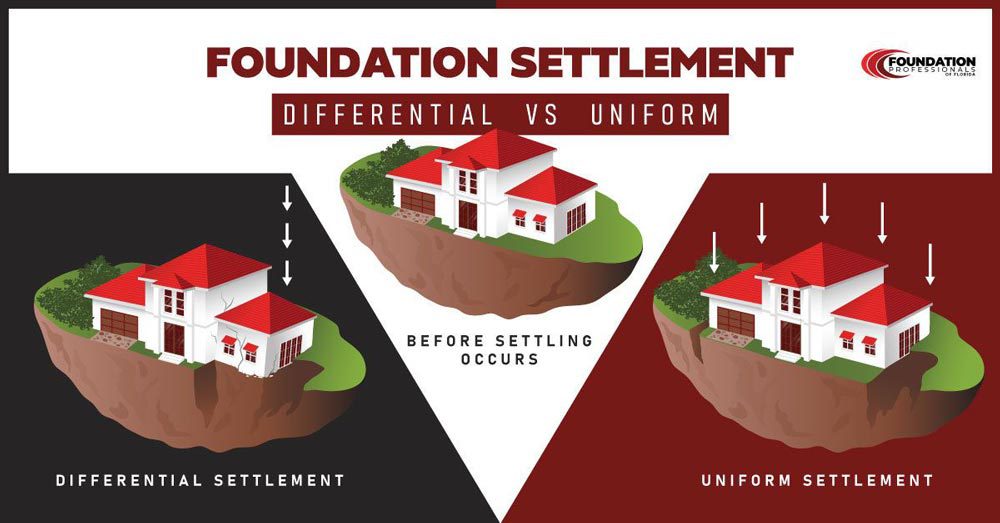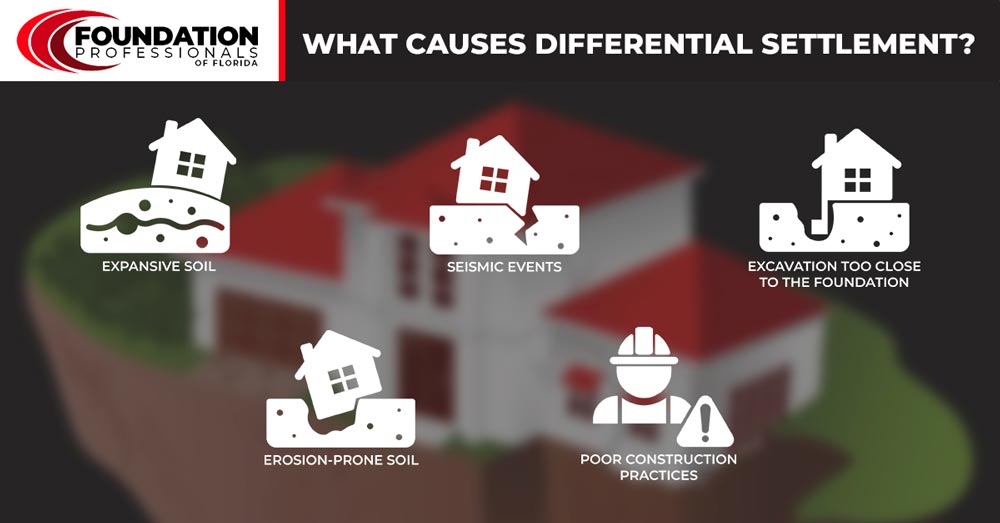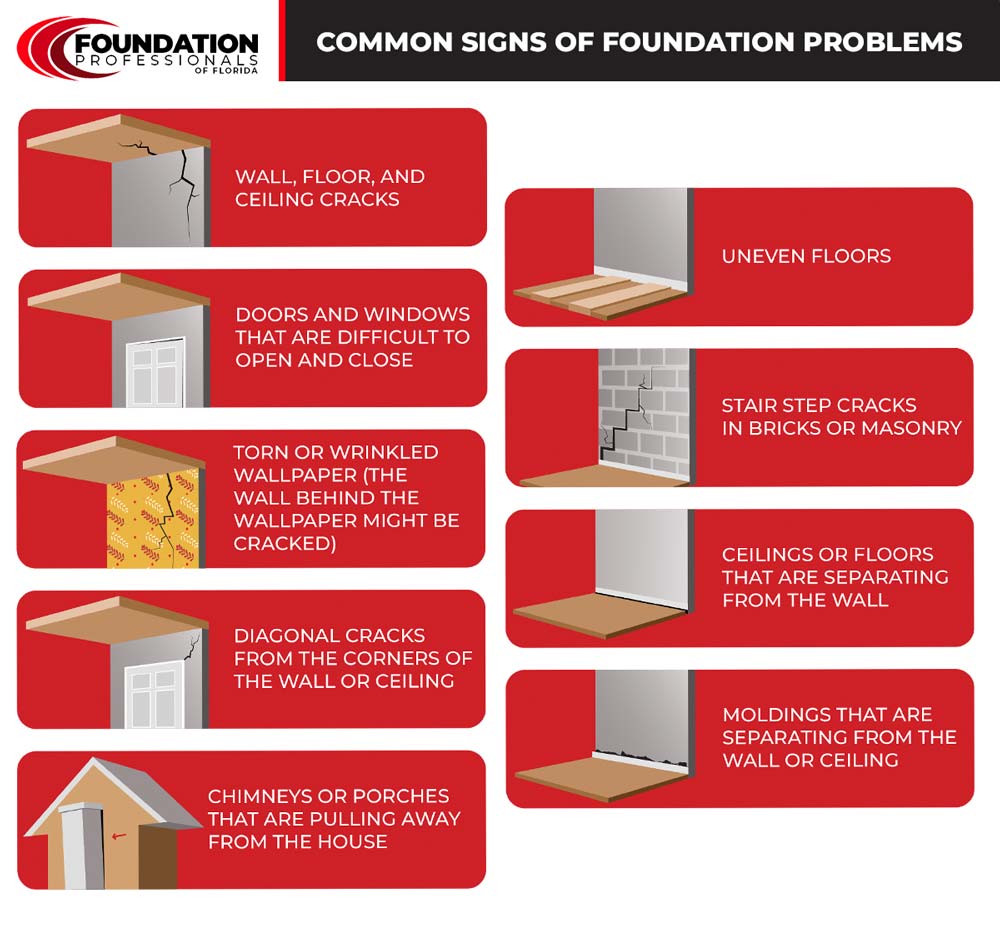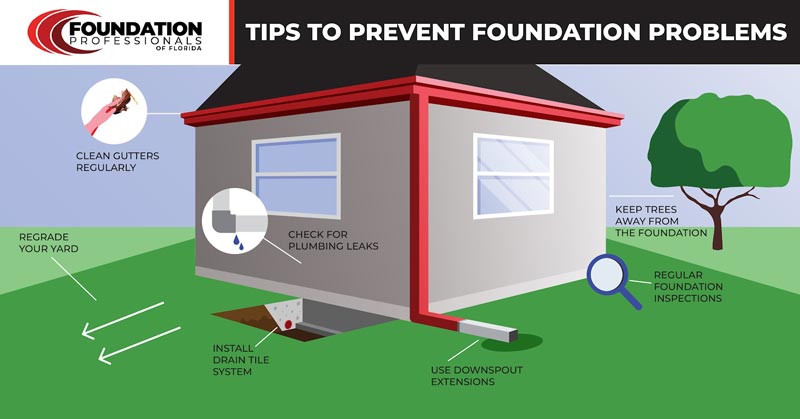Looking for information on how to fix a sticking door? If so, this article has what you need. You’ll learn the causes of sticking doors, how to know if your sticking door is caused by a serious foundation problem, repair solutions, and more.
What Causes a Sticking Door?
Sticking doors are caused by various things, including the following:
- High indoor humidity level –
When the air is too humid, it can cause the wood in your door frame – or the door itself – to expand, leading to the door sticking. This is especially true if your door is made of untreated or poorly treated wood. It’s important to keep your home’s humidity levels in check, either by using dehumidifiers or via proper ventilation.
- Problems with the frame or hinges – A misaligned door frame can cause the door to rub or drag along the floor. Similarly, rusty or worn-out hinges can cause the door to hang unevenly and stick.
- Differential foundation settlement – Differential foundation settlement is when a structure settles into the ground unevenly. This places enormous stress on the foundation. Differential settlement is a serious foundation problem that must be addressed before it causes severe structural damage. One common sign of differential settlement is doors and windows that stick because everything is out of plumb. We’ll talk more about differential settlement in just a bit.
While a high indoor humidity level and issues with the door’s frame or hinges are relatively easy to fix, differential foundation settlement is another matter. Therefore, if you have a sticking door, you want to ensure it’s not caused by differential settlement.
What Is Differential Foundation Settlement?
Differential foundation settlement is a structural issue that happens when a building settles into the ground unevenly. The best way to describe differential settlement is through an illustration:
The effects of differential foundation settlement can be particularly pronounced in areas with expansive soils prone to swelling and shrinking due to changes in moisture levels. As moisture levels fluctuate, the ground can shift and settle in uneven patterns, causing the foundation to move and causing structural damage.
Addressing differential foundation settlement requires careful assessment by qualified foundation repair contractors, structural engineers, and geotechnical specialists, who can determine the cause of the issue and develop appropriate solutions. In some cases, it may be necessary to repair or replace the foundation entirely (although this is rare), while in other cases, underpinning using push, helical, or slab piers may be all that’s necessary.
Causes Of Differential Foundation Settlement
Various things can cause differential foundation settlement, including the following:
- Structural design and construction flaws – Poor compacting of the soil beneath the foundation, poorly executed excavation, and substandard construction materials can all result in differential settlement.
- Poor drainage – Another major cause of differential foundation settlement is water in the soil. Poor drainage around the foundation and heavy rainfall or changes in water tables can all contribute to water-related differential settlement.
- Natural disasters – Anything that causes the ground to move under the foundation can cause differential settlement.
- Expansive soil – This is soil with a lot of clay in it. It expands when it soaks up moisture and shrinks when it dries out. This creates movement under the foundation and can lead to differential settlement.
- Erosion-prone soil – Some types of soil are prone to erosion. If this happens, voids can form under the foundation. If the foundation sinks into the voids, it could result in differential settlement.
Signs Your Sticking Door Is Caused By Differential Settlement
Just because your door is sticking doesn’t mean you have a foundation problem caused by differential settlement. However, since sticking doors and windows are one common sign of differential settlement, you should look around your home to see if any of the following are present as well:
- Uneven floors – The unevenness might be very slight. What happens when you place a marble on the floor?
- Cracks in walls, floors, and ceilings – As the foundation settles unevenly, it may cause cracks in the walls, floors, and ceilings. These can vary in size. The bigger the crack, the more likely it is to have been caused by differential settlement.
- Sticking windows – As the building settles, both doors and windows may begin to stick or become difficult to open and close.
- Stair step cracks in brick or masonry – These are telltale signs the foundation has moved.
- Leaning chimneys or porches – The separation between the chimney or porch and the house might be very slight.
It’s essential to identify and address differential foundation settlement as soon as possible to prevent further damage to your home and ensure the safety of its occupants. A professional foundation inspection can help identify the cause and extent of the settlement and provide recommendations for repair and stabilization.
How To Fix A Sticking Door Caused By Foundation Settlement
Underpinning using push, helical, or slab piers is the most common repair solution for correcting differential settlement.
Push piers
Push piers are driven into the ground underneath the foundation until they reach stable soil. Then, the weight of the house is transferred onto the piers. A synchronized hydraulic lifting system gently raises the foundation as much as possible without causing damage.
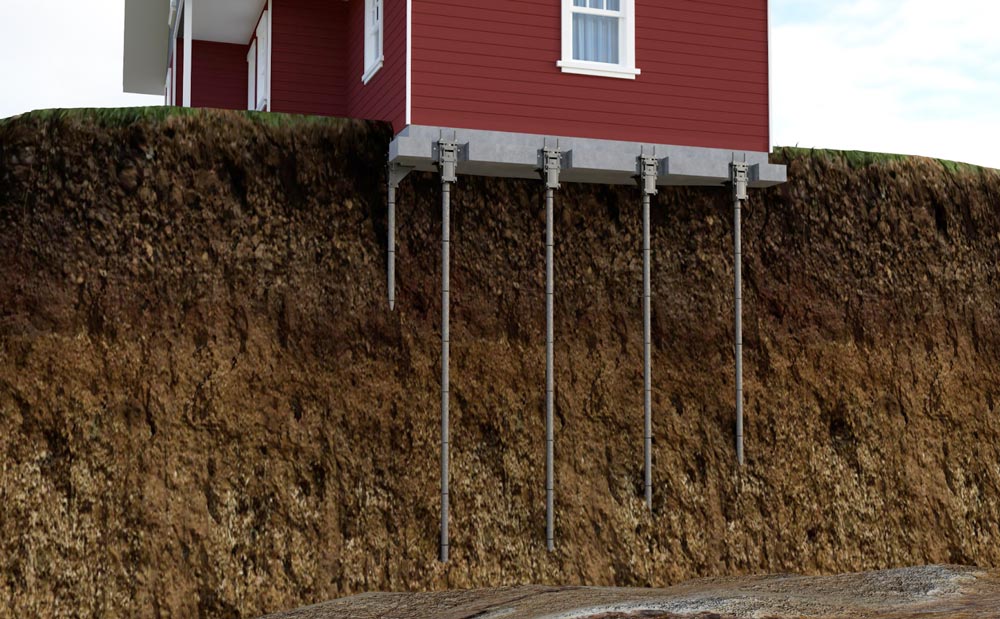
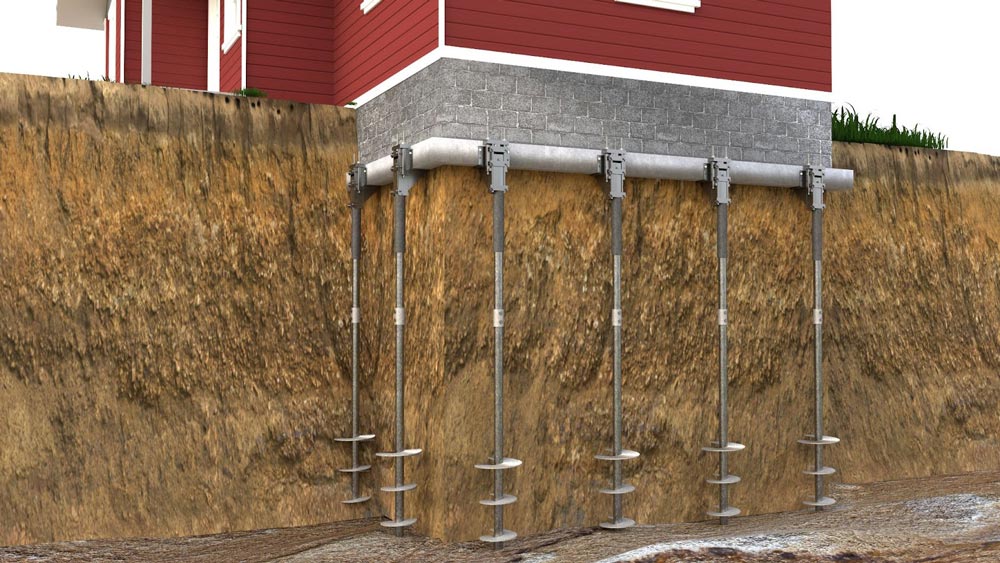
Helical piers
Helical piers are similar, but instead of being driven into the ground, they’re turned into place using a hydraulic motor. This option is often used for lighter structures.
Slab piers
Slab piers are push or helical piers installed through holes cut into the slab. The weight of the house is then transferred onto the piers to stabilize the foundation.
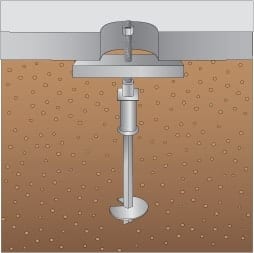
Underpinning allows the weight of the house to be transferred to load-bearing soil, stabilizing the foundation and preventing further damage. For more information, see What Is Underpinning.
How To Help Prevent Differential Settlement
Fortunately, there are things you can do to help prevent differential settlement. These include the following:
- Regrade your yard so that it slopes away from the foundation. This will ensure proper groundwater drainage away from the foundation.
- Install downspout extensions to direct rainwater away from the foundation. This will prevent water pooling around the foundation and soaking into the soil.
- Regular cleaning of gutters is also crucial to prevent clogging and ensure that runoff goes where it should.
- Another effective way to prevent foundation problems is by installing a drain tile system around the perimeter of your property. A drain tile system is designed to channel excess groundwater away from the foundation.
- Keeping trees away from the foundation can also prevent problems. Large trees have extensive root systems that can cause a lot of trouble if they invade the ground under a foundation. Trees can also “drink” moisture from the soil, causing the ground to shift and potentially harm the foundation.
Note that most of the above involves controlling groundwater around the foundation. This is because most foundation problems are caused by excess moisture in the ground around the foundation.
If you’re concerned about a sticking door, contact Foundation Professionals of Florida today and schedule a foundation evaluation. If we find a problem, we’ll give you a repair estimate.

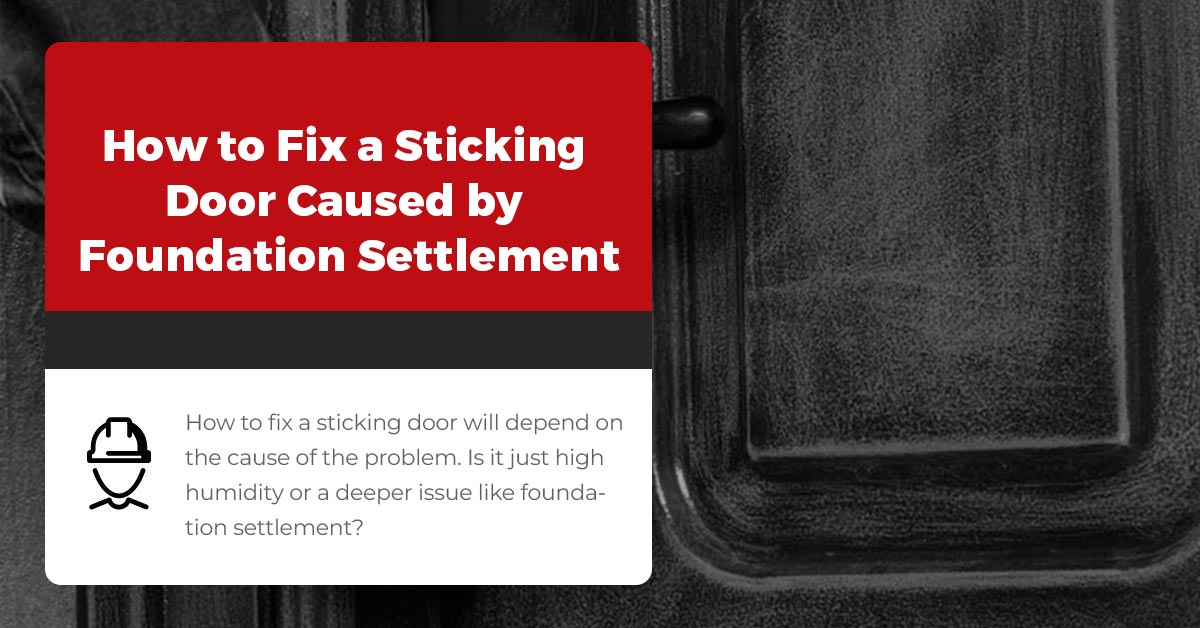
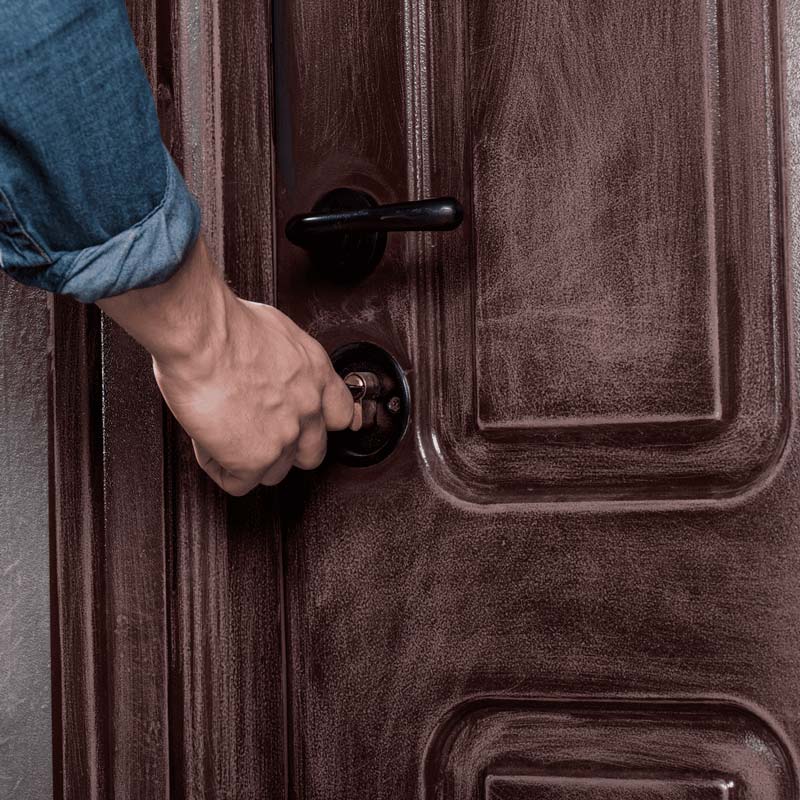 When the air is too humid, it can cause the wood in your door frame – or the door itself – to expand, leading to the door sticking. This is especially true if your door is made of untreated or poorly treated wood. It’s important to keep your home’s humidity levels in check, either by using dehumidifiers or via proper ventilation.
When the air is too humid, it can cause the wood in your door frame – or the door itself – to expand, leading to the door sticking. This is especially true if your door is made of untreated or poorly treated wood. It’s important to keep your home’s humidity levels in check, either by using dehumidifiers or via proper ventilation.